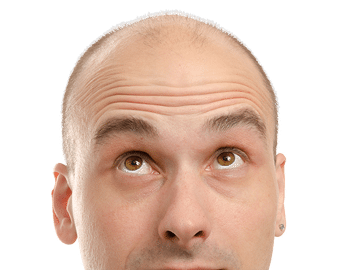From local celebrities to international superstars, image is everything. While a growing number of people pursue an “Instagram-ready” look for their “followers” of friends and family, celebrities are under greater pressure to maintain a youthful, vital appearance. For male celebrities experiencing hair loss, a hair transplant procedure can be what’s needed to keep their career active, and the confidence to stay on their “A” game.
Because successful men in the public eye typically seek the best, most qualified surgeon to achieve phenomenal results, Dr. Marco Barusco – Founder and Chief Medical Officer at Tempus Hair Restoration – has had the honor of treating many leading actors, entertainers and professional athletes. While most choose to not confirm or discuss their procedure – wishing to maintain the illusion of eternal youth – others are glad to speak out about what led them to undergo a hair transplant.
Dr. Barusco and Jimmy Hart
One of Dr. Barusco’s patients who is well-known for speaking out is Jimmy “The Mouth of the South” Hart.
His career began in the 1960s with a rock band called The Gentrys, whose biggest hit was “Keep on Dancing.” After The Gentrys disbanded, Hart found superstardom as a professional wrestler in the World Wrestling Federation and World Championship Wrestling. Now a manager of professional wrestlers, Hart continues his passion for music and showmanship.
In his testimonial video for Dr. Barusco, Hart enthusiastically relates his hair transplant journey.
Hart’s hair loss involved his hairline, crown and back of the head. Although always keeping an upbeat attitude in public, he was increasingly unhappy with the changes, and believed his fans noticed the difference, as well.
“I know I could tell when I would do the shows … where people go, ‘Hey, Jimmy, how you doing,’ but nobody really came up to me and said, ‘Oh my gosh, you look so young!’”
That changed after meeting Dr. Barusco and undergoing a hair transplant procedure Hart described as painless and easy, allowing him to return to his busy schedule the following day.
Dr. Barusco describes the procedure he recommended for Hart:
“Jimmy had a couple of FUT (or strip) procedures, with the goal of filling in his hairline, mid scalp and crown. Due to the characteristics of his donor hair (caliber, density, etc.), I felt that the FUT procedure would provide him with the best result, combined with medical treatments to strengthen and preserve his native hair. He has done very well, and the small scar on the back of his scalp is not noticeable at all.”
Hart’s fans now tell him how young he looks – which speaks volumes about the successful result Dr. Barusco achieved. On a trip to Los Angeles, he said,
“Everybody asked me the same thing: ‘Jimmy, you look younger and younger! What’s the secret?’ I said, it’s the hair, baby!”
Dr. Barusco and Raven
Another of Dr. Barusco’s patients from the professional wrestling world, Raven, experienced hair loss in a more dramatic way – in the ring. The legend of ECW, WCW, WWF and TNA wrestling tells the story behind his decision to undergo a hair transplant in two testimonial videos for Tempus Hair Restoration – one pre-surgery; the other, the following day.
Raven’s larger-than-life persona owed a great deal to his luxurious mane of hair. One fateful match required the loser to have his head shaved immediately after – in the ring, before a house full of fans. Unfortunately, Raven was not the victor that night, and the person in charge of shaving used a sheep sheer turned upside down, slicing through Raven’s scalp with every pass. Blood ran down Raven’s face, which brought cheers from the crowd, who probably thought it part of the show. After the wounds healed, Raven’s hair failed to regrow properly, thinning in the center.
Quoth Raven: “I always thought I would just go bald, but after seeing my head bald, it’s not a good look for me. It was either go thin, or get a hair replacement. My ego prevailed. I never thought I would have an ego about this – that when it came time to go bald, I would just go bald gracefully. But apparently, I have more ego than I thought.”
Dr. Barusco recommended a procedure that would give Raven the desired fullness: “For Raven we also opted for the FUT procedure. He normally wears his hair long on the back, and for him having a small linear scar on the back of his head is not a big deal. We also recommended a plan so that his hair loss will slow down.”
The day after undergoing surgery, Raven spoke about the ease of the procedure and minimal sensation at the surgical sites. Today, he’s no longer balding, and back to bringing on the intimidation!
Dr. Barusco and Humberto Martins
Dr. Barusco’s famous patients aren’t all professional wrestlers, however. He tells of renowned Brazilian actor Humberto Martins, whose long career includes numerous movie and TV roles. As hair loss creates the appearance of age, this dashing leading man was being offered more and more roles of older characters. He decided to start treatment with Dr. Barusco in 2016 to win younger roles again.
Said Dr. Barusco: “For Humberto we used a combination of various strategies to rejuvenate and preserve his existing hair, which achieved the results he expected: subtle changes in his hair density, which has helped him with his career.
“However, whether a patient is a celebrity or not, everyone is a VIP for us and we use every treatment and technique at our disposal to provide patients with accurate diagnosis and the latest treatment modalities, including medications and/or surgery, when appropriate.”
Dr. Barusco and his staff treat one patient at a time, giving each the focused attention they deserve for a safe, comfortable procedure and the best possible outcome.
You are invited to learn more about the innovative surgical and non-surgical hair restoration procedures that Dr. Barusco offers at Tempus Hair Restoration – as well as schedule a free consultation to learn your options. If you are unable to visit one of Tempus’ 14 Florida locations in person, you may consult with Dr. Barusco via teleconference. For your convenience, consultations are offered in English, Spanish and Portuguese.
As fitting, we’ll let The Mouth of the South have the last words about the benefits of a hair transplant by Dr. Barusco – regardless the degree of your fame.
“Through the years, we all get a little bit older, and we all want to look a little bit younger … If you feel good, that’s what it’s all about!”




 Finasteride (brand name Propecia
Finasteride (brand name Propecia
